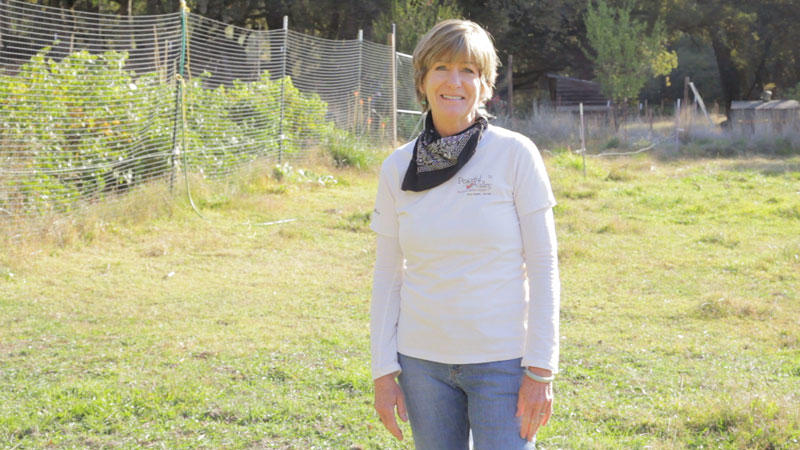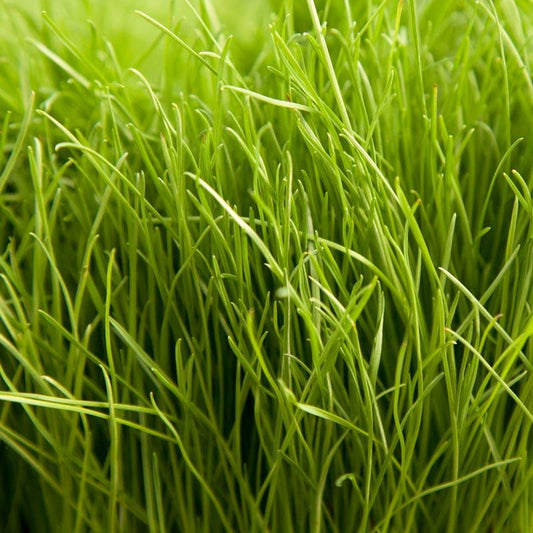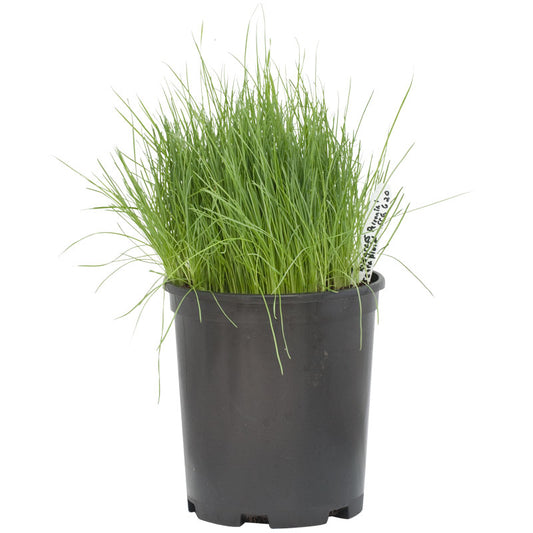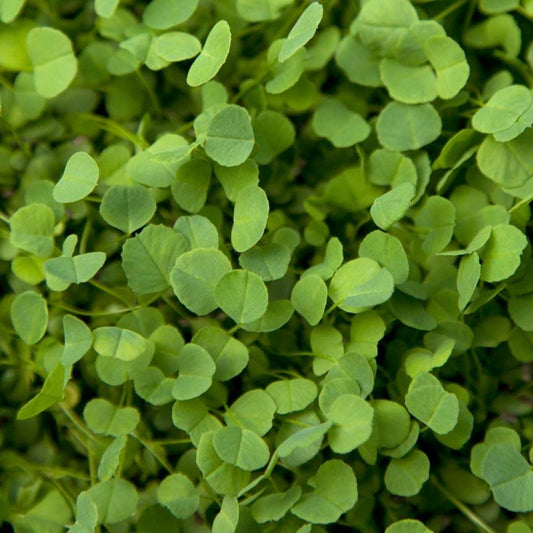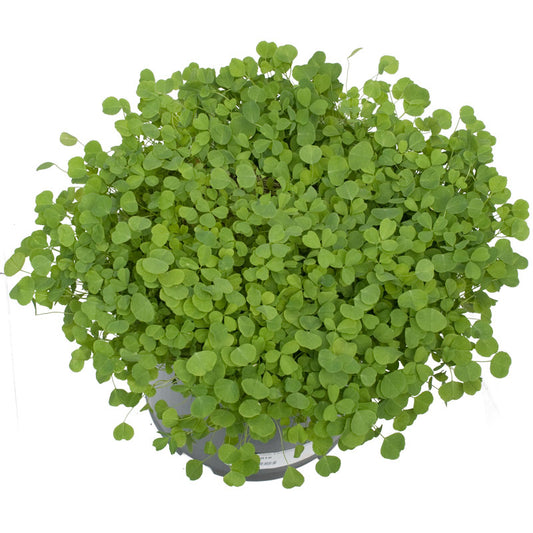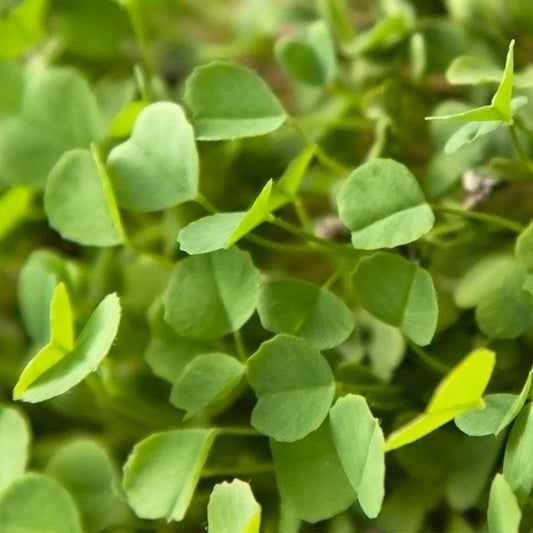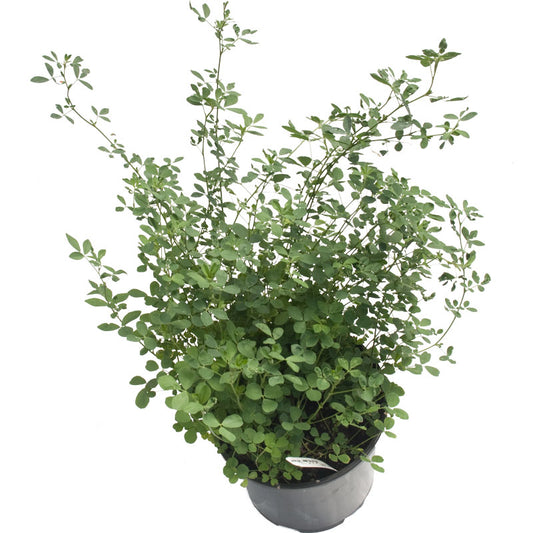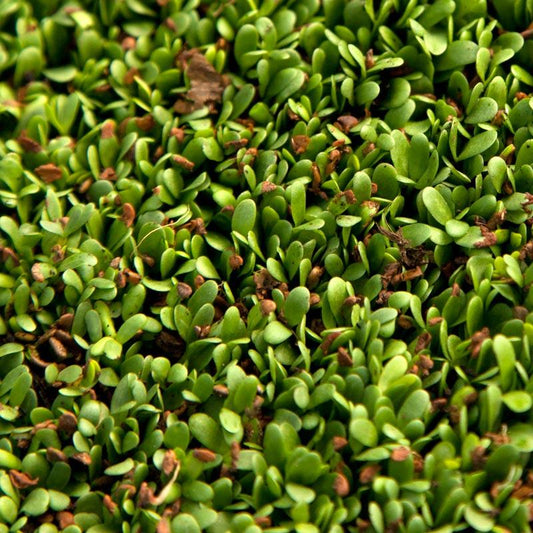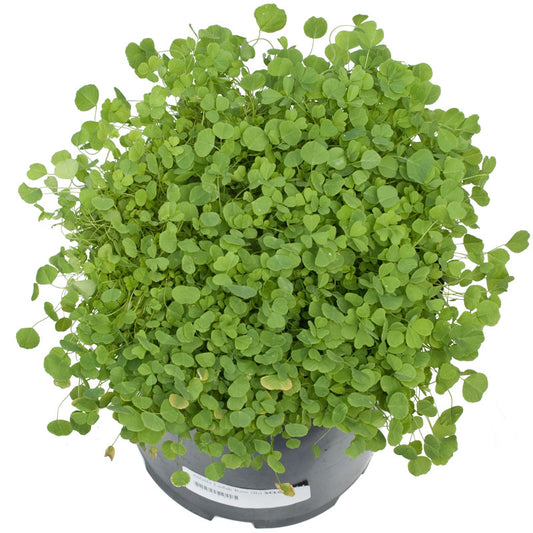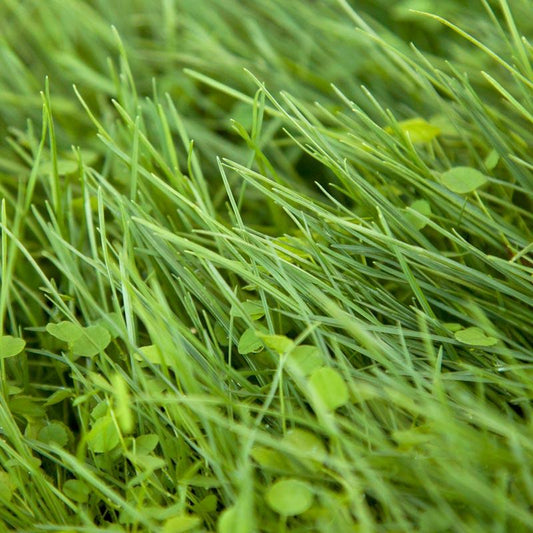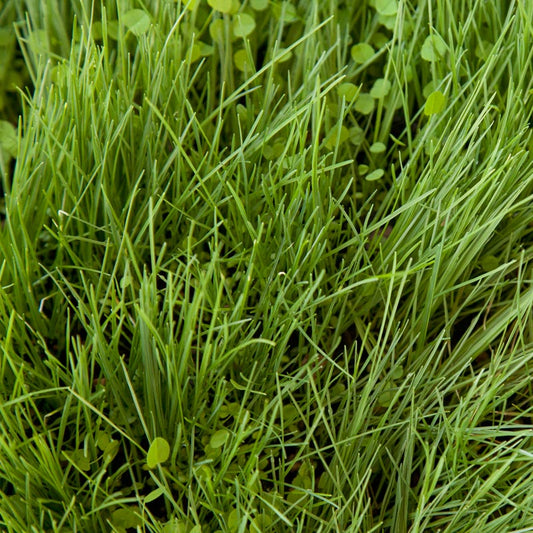Can you irrigate the pasture?
If not, you need dryland pasture seed. Without extra irrigation you'll need to plant only cool-season grasses or legumes that will grow when Mother Nature is turning on the spigot in the fall. Popular dryland mixes are Grass Valley Range Mix (Nitrocoated seed) for overseeding and erosion control, and the all-legume Low Rainfall Dryland Pasture Mix (Nitrocoated seed). If you live in an area with steady rainfall year-round, or you have irrigation in place, you can choose from our irrigated pasture seed, using both cool and warm-season grasses. Customer favorites are the diverse Herbal Pasture Mix (Nitrocoated seed).Animals on the pasture
Who's eating all this green stuff anyway? Will you be running cattle, horses, sheep, goats -- or all of them? Check with your veterinarian about the best grazing for your livestock. A general guideline if you're pasturing cattle, horses and sheep is to watch the amount of legumes in a seed mix -- since these animals may bloat and die if they eat too many legumes. We have custom seed mixes for various livestock:
Cattle
- Forage Blend Dryland Pasture Mix (Raw seed)
- Bloat Resistant Mix (Nitrocoated seed)
- Dairy Pasture Mix (Nitrocoated seed)
Horses
- Forage Blend Dryland Pasture Mix (Raw seed)
- Premium Horse Pasture Mix (Nitrocoated seed)
- Bloat Resistant Mix (Nitrocoated seed)
Sheep
Goats
Chickens
If you're pasturing chickens then boost the Omega-3 levels in their eggs by growing them our flax-rich Omega-3 Chicken Forage Blend. Plant this warm-season blend in a separate, irrigated pasture area, then turn them loose on it and let them eat it down to a 3" height. Rotate the chickens to another spot and let the Chicken Forage Blend grow up again.Nitrocoated seed vs. raw seed with inoculant
Legumes are an important ingredient in a pasture mix; they feed the grasses by taking nitrogen from the air and fixing it in the soil. This "nitrogen fixing" is maximized if the legume seeds have rhizobacteria added at the time they're planted. Get those necessary rhizobacteria with pasture seeds that are "nitrocoated" -- the coating applied to the surface of each seed adds rhizobacteria and keeps the seed properly moist, leading to better germination. The coating on our nitrocoated seeds is an OMRI-approved, organic coating, even though the seeds that are being coated may be conventional seeds. Raw seed is usually more expensive than nitrocoated seed because you are getting so much more seed per pound. If you plant raw seed, mix it with the appropriate inoculant just before planting. Tricia shows you how to prepare and mix inoculant in our video.When do you want pasture forage?
 In irrigated pastures, cool-season grasses are the earliest to grow in spring, followed by legumes. When summer comes the cool-season grasses flag, but the legumes keep going, and warm-season grasses (both annuals and perennials) take off. In fall the cool-season grasses revive. In dryland pastures most of the legumes are annuals and tend to go to seed in summer.
In irrigated pastures, cool-season grasses are the earliest to grow in spring, followed by legumes. When summer comes the cool-season grasses flag, but the legumes keep going, and warm-season grasses (both annuals and perennials) take off. In fall the cool-season grasses revive. In dryland pastures most of the legumes are annuals and tend to go to seed in summer.
Special pasture seed mixes tailored to climate and elevation
Sierra Nevada foothills (under 3,000 feet elevation, poor soil, low rainfall) -- we live here and know this soil, so we developed Sierra Foothill Dryland Mix (Nitrocoated seed). Mountains (over 3,000 feet elevation, cold winters) -- for our neighbors up the hill, Peaceful Valley High Sierras Pasture Mix. You can make your own mixes with the many individual grasses and legumes we offer.Know your weeds
What's a weed? In a home garden it's any plant in the wrong place. In a pasture things are more flexible and the weeds are actual bullies that want to take over. They typically are stemmy and lack the nutrition offered by broad-leaf legumes. Keep an eye out for these thugs of the pasture as you walk your property. Take a good look at our photos of these ag criminals so you know them when you see them. One way to control weeds is to whack or mow when the weeds are taller than your desirable pasture seeds. For instance, when the "good" plants are 6" tall and the weeds are 12" tall, whack down to the 7" level and you'll hurt the weeds, not your pasture seeds. This technique will weaken the weeds and if you repeat this several seasons you'll reduce the number of weeds. Johnson grass (Sorghum halepense) can be rooted out by pigs.
Johnson grass (Sorghum halepense) can be rooted out by pigs.  Smut grass (Sporobolus indicus), short or tall, got its name from a black fungus that sometimes appears in the center of this bunch grass. Keep all these things in mind when you choose pasture seed, for verdant pastures and happy livestock!
Smut grass (Sporobolus indicus), short or tall, got its name from a black fungus that sometimes appears in the center of this bunch grass. Keep all these things in mind when you choose pasture seed, for verdant pastures and happy livestock!
Photo credits: Johnson grass, John Tann; Smut grass, Forest & Kim Starr

